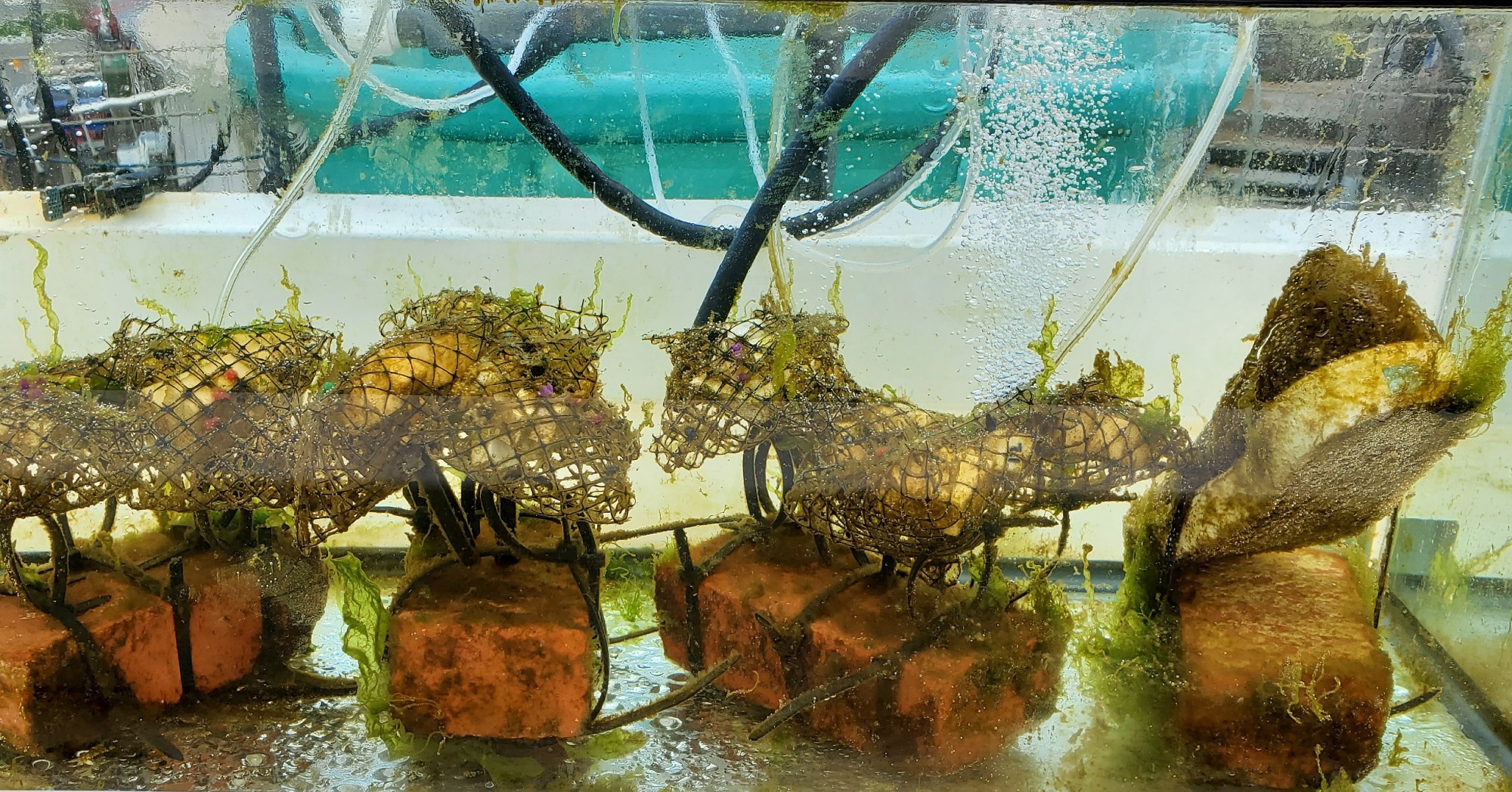Reviewed by Mila PereraSep 23 2022
Plastics, which are already omnipresent throughout the globe, pose a significant challenge to human and environmental health. Evidence of plastic pollution can be found globally, from grocery bags in the deep sea to microplastics in food supplies and even in human blood.

Polyurethane foams biodegrade after one month in a seawater tank. Image Credit: Daniel Zhen, Algenesis Inc.
To solve the ever-growing problem of plastic pollution, researchers at the University of California, San Diego have created new biodegradable polymers intended to replace traditionally utilized plastic.
A multidisciplinary team of researchers led by UC San Diego biologist Stephen Mayfield and chemists Michael Burkart and Robert “Skip” Pomeroy has recently demonstrated that polyurethane foams dissolve in seawater after first demonstrating the material’s biodegradation in land-based composts.
The results were published in the Science of the Total Environment journal.
Scientists are attempting to address the plastic pollution issue, which is currently referred to as a global environmental calamity. In 2010, scientists expected that 8 billion kg of plastic would enter the ocean annually, and that number would sharply increase by 2025.
Plastic trash disturbs marine ecosystems once it enters the water, moves to strategic areas, and forms trash gyres like the Great Pacific Garbage Patch, which has an extent of more than 1.6 million km2.
These plastics never break down; instead, they fragment into ever-tinier pieces that become microplastics, which linger in the environment for centuries.
The scientists at UC San Diego experimented on their biodegradable polyurethane materials at Scripps’ Ellen Browning Scripps Memorial Pier and Experimental Aquarium under the guidance of Samantha Clements, the study’s co-author and a marine biologist and scientific diver at Scripps Institution of Oceanography
The pier’s location gave researchers access to and a one-of-a-kind chance to test materials in the ecology of the nearshore, which is the place where rogue plastics are most likely to end up.
Scientists discovered that different marine organisms colonized the polyurethane foam and biodegraded the material to its starting chemicals.
These starting chemicals were ingested by these microbes in the ocean environment. The research data indicates that microbes, a mixture of fungi and bacteria, thrive throughout the natural marine environment.
Improper disposal of plastic in the ocean breaks down into microplastics and has become an enormous environmental problem. We’ve shown that it’s absolutely possible to make high performance plastic products that also can degrade in the ocean.
Stephen Mayfield, Professor, School of Biological Sciences, Director, California Center for Algae Biotechnology
"Plastics should not be going into the ocean in the first place, but if they do, this material becomes food for microorganisms and not plastic trash and microplastics that harm aquatic life," Mayfield continued.
Flip-flops, the most popular footwear worldwide, and other shoes account for a sizable portion of the plastic trash dumped into landfills and oceans across the globe.
The project gathered specialists in polymer and synthetic chemistry, biology, marine science, and other fields to test and analyze the polyurethane materials created at UC San Diego during the previous eight years.
Foam samples were subjected to tidal and wave dynamics, and chemical and physical changes were monitored using scanning electron microscopy and Fourier-transform infrared spectroscopy.
The findings demonstrated that the material began to deteriorate in four weeks. The scientists then discovered microbes from six marine locations in San Diego that can degrade and consume the polyurethane substance.
No single discipline can address these universal environmental problems but we’ve developed an integrated solution that works on land—and now we know also biodegrades in the ocean. I was surprised to see just how many organisms colonize on these foams in the ocean. It becomes something like a microbial reef.
Stephen Mayfield, Professor, School of Biological Sciences, Director, California Center for Algae Biotechnology
Co-Authors include Natasha Gunawan, Marissa Tessman, Daniel Zhen, Lindsey Johnson, Payton Evans, Samantha Clements, Robert Pomeroy, Michael Burkart, Ryan Simkovsky, and Stephen Mayfield. The study was supported by a US Department of Energy grant (DE-SC0019986) to Algenesis Inc.
Journal Reference
Gunawan, N. R., et al. (2022) Biodegradation of renewable polyurethane foams in marine environments occurs through depolymerization by marine microorganisms. Science of The Total Environment. doi.org/10.1016/j.scitotenv.2022.158761.